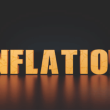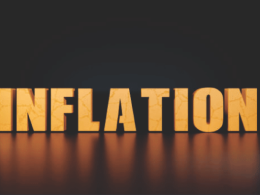by Jeff Weniger, CFA, Head of Equity Strategy & Kevin Flanagan, Head of Fixed Income Strategy, WisdomTree
One question we’ve been fielding quite a bit of late is what do you think the Treasury (UST) yield curve will do? As the reader may recall the curve inverted back in 2022 and has stayed relatively flat, or even in modest negative territory, depending upon what gauge you are specifically measuring. In our opinion, we believe the construct will re-steepen into the closing months of this year and into 2026.
The first, and arguably most important, piece of the puzzle, the resumption of Fed rate cuts, is falling into place. Remember, yield curves are just math, i.e., the difference between short-term rates and longer-dated maturity yields. That being said, not all yield curves are the same even though they are measuring similar things.
The two most closely followed Treasury yield constructs are the 2-year vs. 10-year curve and the 3-month T-Bill vs. 10-year curve. Since the UST 3-Month T-bill yield essentially trades on “top” of the Fed Funds Rate, for the most part, one could use the 3mo/10yr curve as a proxy for the differential for overnight money versus the UST 10-Year yield. One would think that each of these gauges would follow similar patterns since they each measure short duration against long duration. However, that is not always the case.
In fact, calendar year 2025 has been a perfect example. As of this writing, the 2’s/10’s curve has moved into positive territory at about +50bp, but the 3-month/10-year curve actually remains inverted at -3bp. Year-to-date, the 2’s/10’s has steepened by almost 20bp but the 3-month/10-year differential has flattened by 20bp.
Why the discrepancy you may be asking yourself? It is a function of not only changing market expectations for Fed rate cuts, but more importantly, is due to the fact that the policy makers have not yet lowered rates this year. Remember, the UST 3-month T-bill is directly correlated to the actual Fed Funds Rate, while the UST 2-Year yield is also impacted by market expectations for where Fed Funds may be going in the months ahead.
Marking to market, the UST 2-year yield at its current level of 3.50% is fully priced for three rate cuts. Meanwhile, the 3-month T-bill trades at just over 4%, a reading that discounts only one rate cut. History shows that Fed rate cut cycles should cause both of these yield curves to steepen, and we expect history to repeat itself.
So, what should a bond investor consider? The 2-year Treasury floating rate note (FRNs). Treasury FRNs are reset weekly with the 3-mo T bill auction plus a spread. As a result, the FRN yield is 4.14%, as the last 3-mo T bill auction yield fell to 3.94%. In other words, more than one rate cut was beginning to be priced in already, but the FRN rate is an eye-opening 60bp above the 2-yr note yield. In other words, you are still way ahead of the game ‘yield-wise’ and short-term fixed coupon yields could still fall further as well. At this point, only the 20 and 30-yr UST bond yields are higher.
Ask yourself, what’s in your portfolio?
Copyright © WisdomTree















